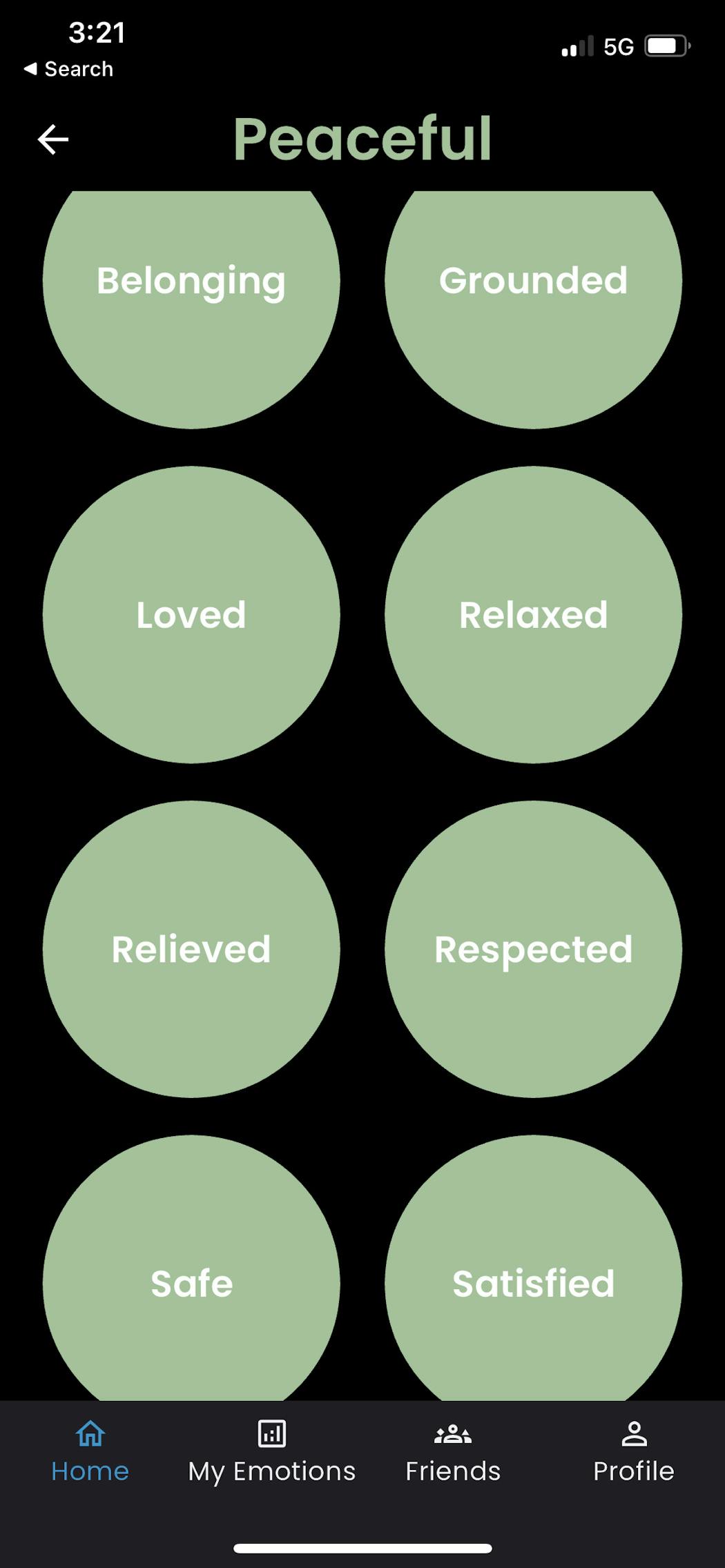When a coworker passing you in the office asks, "How are you?" they probably don't really want you to stop and tell them all about how your car has been making a weird noise but you can't get it into the shop until Wednesday.
So you just say, "Fine."
But when the mobile-phone app Feel Now asks how you're doing, just saying "Fine" is not an option.
Feel Now doesn't need you to tell the whole car-repair story, either, but it does request an honest answer describing your mood. If you say "angry," you are then invited to break that down more specifically as "frustrated" or "annoyed" or various other permutations of anger. On a better day, you can say you're feeling "happy," then specify "excited" or "hopeful" or whatever best applies.
Feel Now is a free app designed by two Edina 17-year-olds: Taara Verma, a senior at the Blake School in Minneapolis, and Siena Pradhan, a senior at Phillips Academy in Andover, Mass. The app, which launched in July, is intended for use mainly by teenagers, as a place where they can analyze and record their moods.
"It's a really easy process to track your emotions just once a day," Verma said.
Users of Feel Now receive a random notification each day, reminding them to log an emotion. In structure, it's similar to Be Real, an app hugely popular among young people that prompts users once a day to take a photo showing what they are doing.
At Feel Now's prompt, the user picks one of six broad categories (happy, peaceful, angry, sad, disgusted, scared), then breaks it down into one of 10 subcategories for each emotion. "Scared," for example, can be more precisely described as "anxious," "confused," "insecure," "overwhelmed," "shocked," "stressed," "threatened," "uneasy," "vulnerable" or "worried." Each subcategory can then be further described as "slightly," "moderately" or "highly." You can record up to five emotions in a day.
The app makes it easy to look back on your emotions over time, potentially spotting patterns. You also can sync it to your contacts and see if your friends have used it that day — although it doesn't let you see what emotions they've recorded.
That's it! There's no further mood analysis required, no journaling, no lengthy diatribe about the garage not getting your car in sooner.
"It's not super complicated," Verma said.
Mental health crisis
St. Louis Park psychiatrist Dr. Vibha Kurdikar agreed that teenagers are often "not really aware of the emotions." The app, which she has tried, forces the user to stop and notice how they're feeling.
"I think that kids nowadays are under a lot of stress, and sometimes they don't know that when they're getting overstimulated or anxious, they don't stop and recognize that this is very stressful until it's too late and their anxiety blows up," Kurdikar said.
Feel Now arrives at a time when mental health problems among children and teenagers have increased so sharply that the American Academy of Pediatrics and two other organizations that focus on youth mental health have declared a crisis.
"This worsening crisis in child and adolescent mental health is inextricably tied to the stress brought on by COVID-19 and the ongoing struggle for racial justice and represents an acceleration of trends observed prior to 2020," the three organizations, which also include the American Academy of Child and Adolescent Psychiatry and Children's Hospital Association, said in a report declaring a "national state of emergency."
Childhood mental health problems and suicide had been rising steadily since 2010, the organizations said. By 2018 suicide was the second-leading cause of death for people ages 10 to 24.
"The pandemic has intensified this crisis: Across the country we have witnessed dramatic increases in emergency department visits for all mental health emergencies including suspected suicide attempts," the organizations said, calling for increased federal funding and other measures to improve treatment and services.
Because of COVID restrictions, young people "have missed major developmental milestones," and therapists are seeing the consequences, Kurdikar said.
"Anxiety and depression in kids is sky-high," she said. "Middle school is a key time when kids start looking outside of themselves, trying to develop social skills. If they were in middle school [during the COVID shutdown], that's gone, and it's never coming back. If you were just home alone during those two years, your reentry back into a school environment and needing to be around people all the time becomes all the more difficult."
Developing awareness
Although using Feel Now potentially could reveal patterns of emotion that could benefit from expert help, "you don't have to be experiencing mental health issues for this app to be useful," Verma said.
Aditi Jha, 14, a friend of Verma's, has been using Feel Now for about a month. When she pauses to examine her mood, she said, she sometimes notices an emotion she wasn't aware of — worry about an upcoming test, for instance — and can make a point of doing something to make herself feel better, which in her case might be playing the piano.
"I often don't think that hard about how I'm feeling," she said.
That's common among teenagers, Verma said. "With a lot of teenagers, especially boys, they don't know what they're feeling and certainly don't want to talk about it."
Looking inward and analyzing one's own mood doesn't come as easily in adolescence as it does in adulthood, Kurdikar said. "Kids aren't as self-aware as adults are. That just happens in maturity."
Feel Now could be useful in combination with journaling or other apps that track lifestyle metrics like exercise or sleep to see if there's some causal pattern. Verma chose not to combine other functions because recognizing and recording one's emotions is valuable on its own.
"The simpler it is, I think, the more people will use it," she said.
Where to find help
Families can find mental health information and resources for crisis care on NAMI Minnesota's website, namimn.org. If you or someone you know is struggling with suicidal thoughts, call the 988 Suicide and Crisis Lifeline by dialing 988. You can also text HOME to 741741 to connect with a Crisis Text Line counselor.

Summer Camp Guide: Find your best ones here

Lowertown St. Paul losing another restaurant as Dark Horse announces closing

Critics' picks: The 11 best things to hear, do and see in the Twin Cities this week

Critics' picks: The 9 best things to do and see in the Twin Cities this week



